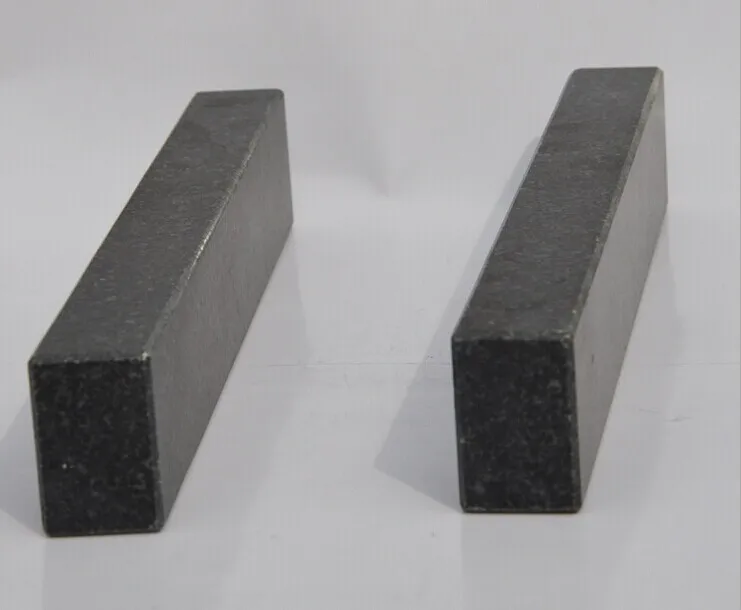דצמ . 03, 2024 15:44 Back to list
linear guide rail
Understanding Linear Guide Rails Essential Components in Precision Movement
Linear guide rails are crucial components in various industrial and mechanical applications. They facilitate the linear motion of equipment, enabling smooth and precise movement along a predefined path. Whether in manufacturing machinery, robotics, or automotive assembly lines, linear guide rails play an integral role in enhancing performance and efficiency.
What is a Linear Guide Rail?
A linear guide rail, often referred to simply as a guide rail or linear guide, is a system designed to provide support and guidance for moving parts. The primary function of a linear guide is to reduce friction and guide an object's motion along a linear path. Typically, a linear guide consists of a rail and a slider, also known as a carriage. The rail is mounted to a stationary surface, while the slider moves along the rail, allowing for smooth and precise motion.
Components and Materials
Linear guide rails are usually constructed from durable materials such as stainless steel or aluminum. Stainless steel offers corrosion resistance and strength, making it ideal for harsh environments, while aluminum is lighter and easier to handle, often preferred in applications where weight is a significant concern. The choice of material often depends on the specific application requirements, including load capacity, environmental factors, and desired precision.
The core components of a linear guide system include
1. Rails The fixed structure that provides a path for the slider. 2. Carriages/Slider The moving component that glides along the rail and carries a load. 3. Rollers or Ball Bearings These elements are embedded in the carriage to minimize friction between the rail and the slider, facilitating smooth motion.
Types of Linear Guide Rails
There are several types of linear guide rails, each designed for specific applications. The most common types include
1. Ball Type Linear Guides These use ball bearings to provide smooth movement and can handle both radial and axial loads effectively. They are widely used in applications with moderate to high load demands.
2. Roller Type Linear Guides Incorporating cylindrical rollers instead of balls, these guides excel in applications where higher load capacities and rigidity are required. They are often used in heavy machinery and industrial applications.
3. Slide Type Linear Guides Utilizing a sliding mechanism, these guides offer a simpler design and are suitable for applications with lighter loads and less stringent precision requirements.
linear guide rail

4. Magnetic Linear Guides These employ magnets to facilitate frictionless motion. They are particularly effective in high-speed applications, such as in conveyor systems or automated assembly lines.
Advantages of Linear Guide Rails
The use of linear guide rails comes with numerous benefits
- Precision Linear guides are designed to provide a high level of accuracy in positioning, making them ideal for applications where precision is paramount.
- Low Friction The use of ball bearings or rollers significantly reduces friction, leading to smoother operation and less wear.
- High Load Capacity Many linear guides can support substantial loads, making them suitable for robust industrial applications.
- Versatility Linear guide rails can be adapted to various applications, from simple linear motions to complex robotic movements.
Applications of Linear Guide Rails
Linear guide rails are ubiquitous in modern manufacturing and engineering. They are commonly found in
- CNC Machines Providing the necessary movement for cutting and shaping materials with high precision. - Robots Guiding robotic arms or mobile platforms that require accurate positioning. - Automated Systems Facilitating components that need to move smoothly and reliably, such as conveyor belts. - Medical Equipment Ensuring precision in devices that require exact movements, such as in surgical instruments or imaging devices.
Conclusion
In summary, linear guide rails are fundamental to many technologies that require precise and reliable linear motion. With various types available and advantages such as low friction, high load capacity, and versatility, they are indispensable in numerous applications across different industries. As technology continues to advance, the design and functionality of linear guide rails are also evolving, promising even greater efficiencies in motion control and automation. Understanding these components can provide valuable insights into their importance in driving modern engineering and manufacturing practices.
-
thread-plug-gauge-our-promise-of-measurement-excellenceNewsAug.22,2025
-
gauge-pin-class-reflecting-quality-legacyNewsAug.22,2025
-
check-valve-types-for-high-rise-buildingsNewsAug.22,2025
-
water-control-valve-for-irrigation-systemsNewsAug.22,2025
-
gate-valve-with-soft-seal-technologyNewsAug.22,2025
-
y-type-strainer-for-oil-and-gas-applicationsNewsAug.22,2025
Related PRODUCTS









